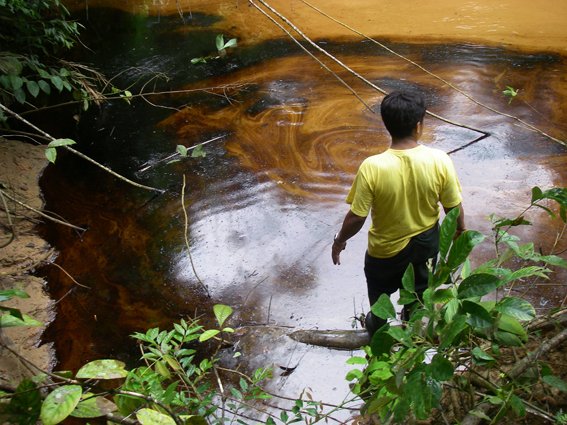Lead, a cumulative neurotoxin, is the most widespread toxic metal in the world, with highest concentrations of environmental lead found in industrialized countries. Arguably, in the Amazon rainforest, the world’s largest expanse of tropical rainforest, harbouring high levels of both biocultural and cultural diversity, wildlife should not be presumably compromised by industrial and urban pollutants given its remoteness.
In our study, we evaluate, for the first time, lead levels and their isotopic fingerprints in free-ranging wildlife in remote areas of the Peruvian Amazon. Liver samples have been collected from animals hunted for food by the local Indigenous Peoples (Quechua, Achuar and Yagua). These areas are only accessible after a 4-5 day trip by boat, along the local rivers. Some of the study areas are also located in the second most productive oil concession of the country, operated since the early 1970s.

50% of the samples analyzed were above 0.5 milligrams per kilogram, value that the European regulation considers as a limit for human consumption of animal viscera, and 91% above the 0.1 milligrams per kilogram, the maximum concentration considered suitable for consumption of meat in general. Since almost thirty of the samples analyzed contained much higher concentrations of lead, this scenario poses a very high risk for the local population.
[ad_336]
Researcher have also demonstrated that main sources of lead are the widely use of lead-based hunting ammunition and, the oil-related pollution in oil extractive areas. Indeed, lead-shot contamination may be an underestimated continental-scale problem in South America. These results suggest that lead entered the trophic chain in areas where human population depends on subsistence hunting and, is not likely to be a unique problem but a common one for the world Indigenous Peoples that use lead-based ammunition.
In addition, the fact of having found oil-related lead in wildlife suggests that other toxic compounds related to the oil activity may have also entered the trophic chain. Indeed, in the northern Peruvian Amazon, oil extraction activities have generated an important environmental impact through the daily spillage of lead-rich wastewater into the environment.
Due to the high dependence of global Indigenous Peoples on subsistence hunting and the extended use of lead-ammunition, jointly with the advance of oil activities in tropical rainforests (oil and gas reserves overlap with 30% of the world’s rainforests), these results uncover an important health risk for tropical wildlife conservation and for local human communities that rely on subsistence hunting.

[rand_post]
Finally, our study further illustrates how remote natural areas also contain yet another ubiquitous anthropogenic footprint. This might be extended throughout the Amazonian ecosystem illustrating how human impact reaches further than usually envisaged, and the expansion of anthropogenic contaminants from industrial centers to the most remote areas of the planet.
In the present study, published recently in the journal Nature Sustainabiliy, have participated Mar Cartró Sabaté, researcher from the Institut de Ciència i Tecnologia Ambientals from the Universitat Autònoma de Barcelona (ICTA-UAB); Pedro Mayor, researcher from the Departament of Animal Health and Anatomy from UAB; Martí Orta-Martínez, from the Universitat Central de Catalunya/Universitat de Vic and ICTA-UAB; and Antoni Rosell, ICREA researcher from ICTA-UAB.